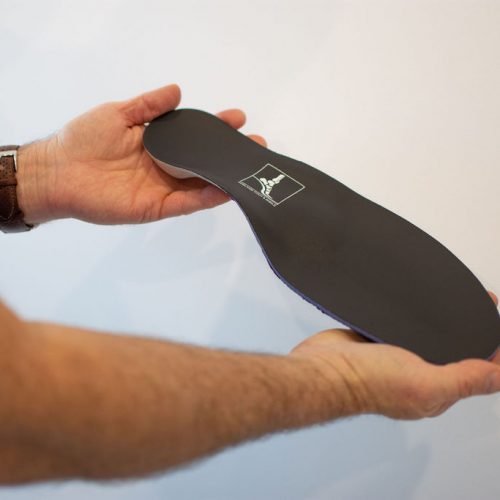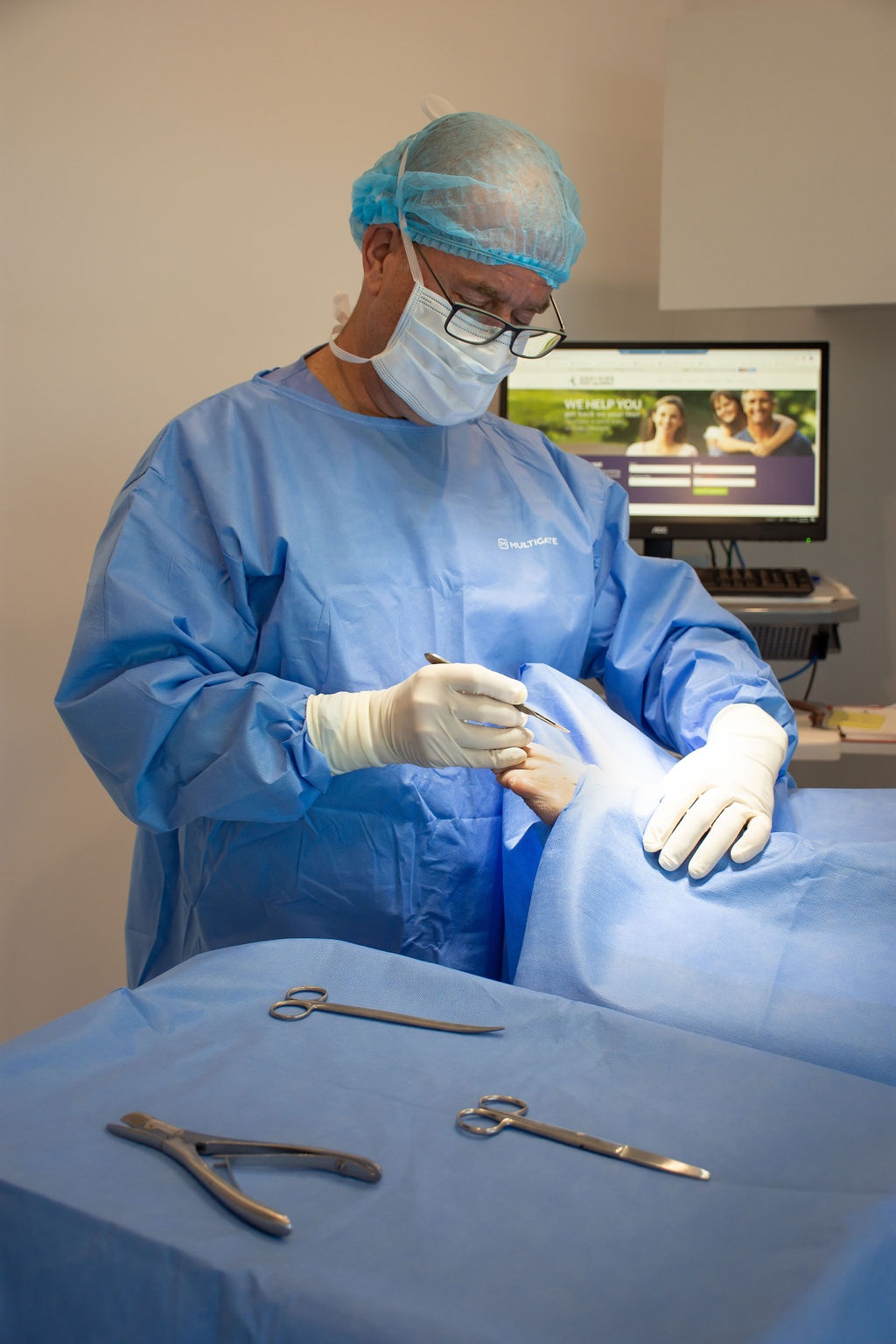At Adelaide Foot and Ankle, we often see patients complaining of pain, particularly in the ball of the foot. A plantar plate tear is a foot injury that can cause a gap between second and third toes.
Chronic foot pain caused by a plantar plate injury can interfere with your daily activities. You must receive proper diagnosis and treatment from a general practitioner or podiatrist so you can get back on your feet as soon as possible.
What is a Plantar Plate?
Under your toes, a ligament called the plantar plate stretches across toe joints at the ball of your foot.
Your plantar plate does a few important jobs:
- It guards the joints in the ball of your foot (metatarsophalangeal joints), especially the metatarsal head, from stretching too much when your foot bends.
- It soaks up the impact when you walk.
- It holds the joints at the ball of your foot steady, making sure they stay in line and don’t move up or down, keeping your toes in sync.
- It helps out other structures, like the plantar fascia, in doing their job.
What Causes a Plantar Plate Injury?
Image Source: Pexels
Along with a ruptured ligament, Morton’s foot type (short first metatarsal bone) and neuroma (benign tumour of nerve tissue), a torn plantar plate is one of the most common causes of toes spreading apart.
Most injuries to plantar plates develop slowly, but some can come on suddenly. Overuse or strain can rip the plantar plate, usually on the second toe, as it’s the longest metatarsal bone.
Whilst a strenuous activity, like running, can damage your plantar plate ligament, everyday activities like barefoot walks on rough ground or rocking those high heels or ill-fitting shoes can tear them too.
Typically, tears on the plantar plates can stem from:
- Overpronation (rolling your feet inwards)
- Bunions or hammer toes
- A long-second metatarsal bone
- Activities that put excessive pressure on the ball of the foot like dancing, running or climbing stairs
What are the Symptoms of Plantar Plate Injuries?
Persistent pain and swelling under the ball of your foot that extends toward the toes can be an early indicator of a plantar plate tear. Bending the affected toe upwards may reproduce the pain.
Additionally, some swelling and redness might be visible on the top of the foot. Some patients describe a sensation of walking directly on their metatarsal bones.
Chronic foot pain caused by a plantar plate injury can interfere with your daily activities. You must receive proper diagnosis and treatment from a general practitioner or podiatrist so you can get back on your feet as soon as possible.
In more severe cases, the tear may lead to a widening of the space between two toes, creating a distinctive ‘V’ shape.
How are Plantar Plate Injuries Diagnosed?
Diagnosing plantar plate tears can be tricky, as the foot’s intricate anatomy makes pinpointing the injury difficult. Consulting an experienced podiatrist is crucial, as they can evaluate your condition and determine the severity.
Plantar plate tears can vary from mild sprain to complete rupture. This is why medical imaging like X-rays or MRIs might be necessary to accurately assess the extent of the damage and ensure the most effective treatment plan is tailored for your specific case. In most cases diagnostic ultrasound will provide the necessary imaging that will confirm the diagnosis of plantar plate tears.
At Adelaide Foot and Ankle we have high resolution diagnostic ultrasound available for our patients to assist with the diagnosis and treatment of plantar plate tears.
How to Fix Gap Between Toes
Initially, treatment for plantar plate tear focuses on relieving the painful symptoms. There are several treatment options to consider without going under the knife.
Treatment for a plantar plate injury may involve:
- Taking anti-inflammatory medications.
- Avoiding any activities that worsen the pain.
- Switching things up with more comfortable footwear.
- Adding some extra padding to the affected area.
- Strapping the toes.
- Using orthotics to correct any biomechanical or alignment issues that might have contributed to the injury.
- Steroid injections to the joint
To prevent future flare-ups, the treatment aims to address any underlying issues like flat feet, bunions or hammer toes. After a thorough examination, your GP or podiatrist will come up with the best treatment plan to take the weight off your forefoot and aid in the healing process.
Non-surgical Treatment
Resting, putting ice on the affected area and wrapping it up (either with tape or a bandage) can help ease the pain in the early stages of the plantar plate injury. Your doctor might also suggest over-the-counter pain meds and a stiff-soled shoe like a hiking boot or sturdy runner.
Also, they might even give you special shoe inserts to stiffen your shoes further. Wider shoes with a deeper toe box can do wonders too.
You can find over-the-counter toe splints at the chemist’s to keep the toe straight and ease the pain. Your doctor might even show you a special taping trick to keep your toe in place and help relieve pain.
As your condition improves, your podiatrist will help you ease back into your activities. Recovery can take a few weeks, maybe even months.
Surgical Treatment
If the patient doesn’t respond well to non-surgical treatment or the affected area is too stiff to treat with more conservative treatment methods, that’s when podiatrists might suggest going under the knife.
There are a bunch of treatment options to fix up a plantar plate tear, sort out the problems and ease the pain. Most of them are quick surgeries done in a day.
Your podiatrist will speak with you about what can be done and suggest a treatment plan based on how bad the injury is and what you’re hoping to achieve.
To fix a torn plantar plate, there are two different types of surgery your doctor might choose from:
Plantar Plate Repair
This surgery fixes your toe joint through top or bottom incisions. The surgeon may realign or shorten a bone to ease the pressure, then protect the repair with dressings or a pin for several weeks.
Tendon Transfer
For long-standing toe joint tears, a tendon transfer might be needed. Surgeons reattach a toe-bending tendon to the top of your toe, anchoring it flat.
Minimally invasive surgery
For most cases of plantar plate tears minimally invasive or keyhole surgery provides the best long term solution for plantar plate tears.
Recovery
Recovery can take a few weeks to months, depending on what kind of surgery you had. You might need to avoid putting weight on your leg for a bit to let things heal. Most folks end up wearing a special shoe for a while, and how long depends on how bad the injury was and what surgery was done.
Risks and Complications
Most folks mend up just fine after surgery, but for some, not so much. A few things can go awry, like trouble with the wound healing, nerve injury (leading to tingling or numbness), infection and a bit of toe stiffness. Moreover, there are risks if you’ve been puffing on smokes or have one of those autoimmune conditions.
Get Your Toes Straight Again at Adelaide Foot and Ankle
If you’re concerned about foot pain or suspect a plantar plate tear, we’re here to help. We use our extensive experience to diagnose and provide effective treatments for plantar plate injuries of our patients in Semaphore, Prospect and Campbelltown.
Contact us today. Find out how to kickstart the healing process, so you can get back on your feet and dive back into life.
FAQs
1. What causes separation between second and third toes?
A plantar plate tear or torn ligament can cause a noticeable ‘V’ shape, widening the space between two toes.
2. How serious is a plantar plate tear?
Without treatment, the metatarsophalangeal joint can fully dislocate and, over time, develop degenerative joint disease.
3. How do you repair a plantar plate tear?
Surgery can repair the toe joint through top or bottom incisions. It aims to realign or shorten a bone to relieve pressure and safeguard the repair with dressings or a pin for several weeks.
Source:
https://www.footcaremd.org/conditions-treatments/toes/plantar-plate-tear








